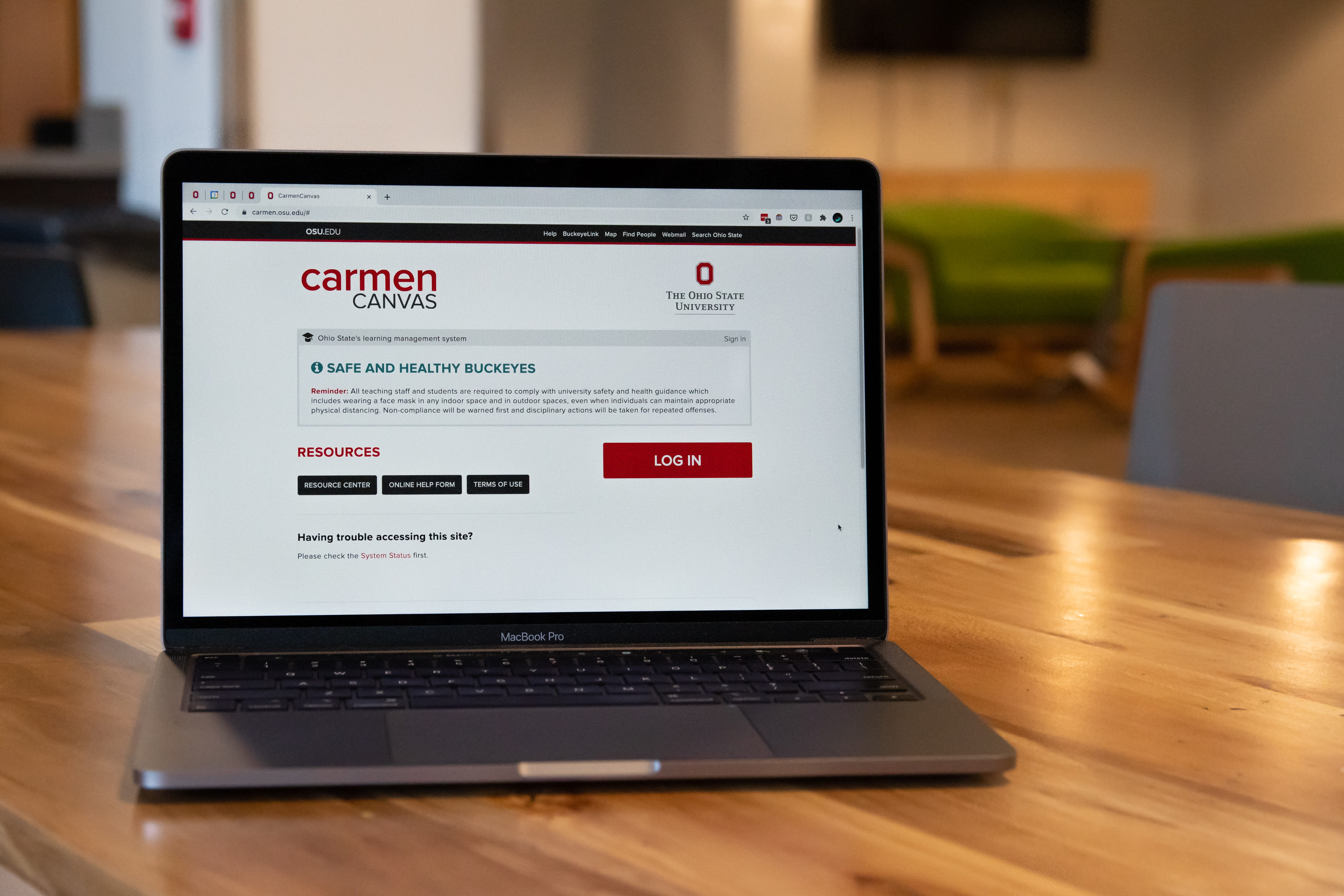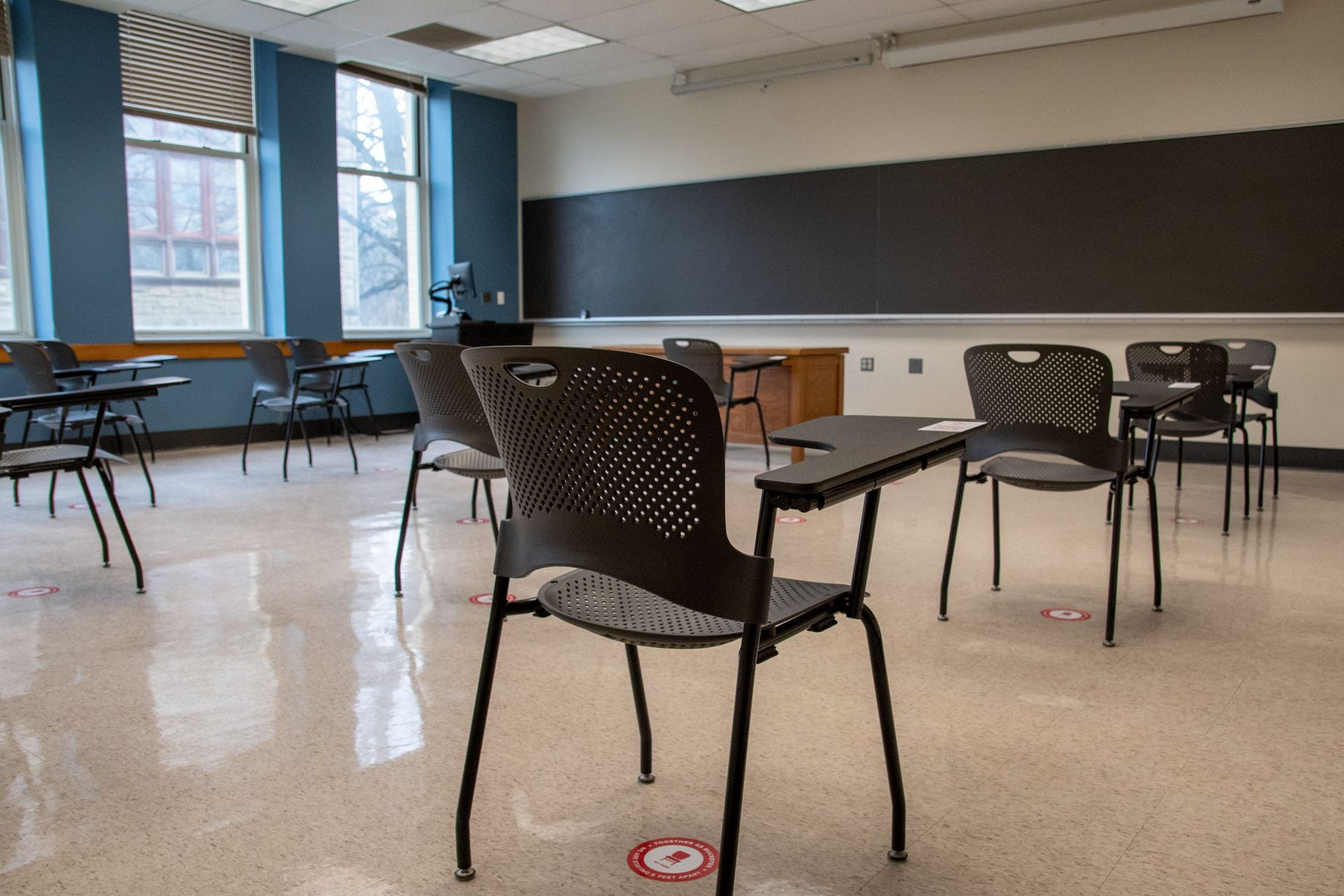The future of the classroom

As classes went online during the pandemic, many instructors had to learn to navigate and adjust to the new online platform, evolving classes to best meet the academic goals and needs of their students. Credit: Christian Harsa | Asst. Photo Editor
I attended a conference a few years ago where I experienced a vision of the future. There were two panelists seated at the front of the room. Between them was a laptop with the face of another presenter Skyping in from Europe. Her image was projected on a large screen above the proceedings, but for a moment, I stared at the laptop. In my mind, the three speakers — two actually present, one virtual — were occupying the same physical space in front of me.
If the laptop would have been slightly larger, the virtual speaker could have been indistinguishable from the other two speakers. Rather than looking up at the large projection, I could have simply looked at the three speakers in a row. The speaker, for her part, could see the audience as her colleagues could, although she could not swivel her virtual head to take in a panorama of the space, nor could she turn side to side to directly address the other panelists. But imagine a future where rather than participating in a meeting via Zoom (a flat, 2D experience), our guest from Europe wears an Oculus-like device to “see” the same classroom space that I am physically occupying. And for my part, I would not be looking at a flat projection of the virtual speaker, but rather (wearing my own device) a full, 3D holographic projection of the person.
In other words, physical and virtual space would be blended together.
If my students are any indication, a future where all higher education is delivered exclusively online is hardly guaranteed. The assumption before the pandemic was that all education was moving inexorably online. The pandemic merely accelerated this process: anyone reluctant to transfer their classes online had no choice but to give in to the future.
Yet I am not convinced that the future of higher education is inevitably online. My students speak with almost one voice that they prefer meeting face-to-face, and that education is much more than the transactional exchange of information between teacher and student. Physical presence confers pedagogical advantages that an asynchronous course cannot match.
And yet, if a year teaching and communicating over Zoom has taught me anything, it is that I can accomplish things in this medium that are very difficult to achieve face-to-face. I host a number of events — CreativeMornings Columbus, Columbus Futurists — and in the past year I’ve been joined by people from across the country and around the world. But for Zoom, this geographically diverse population would not have been able to gather in one (virtual) space.
I have called this “Zoom globalization,” and I wonder if it will be a phenomenon that survives the pandemic.

Physical classrooms could be a thing of the past or at least adapted with technology that became normalized in the pandemic in a post-COVID world. Credit: Christian Harsa | Asst. Photo Editor
During the pandemic, many faculty experimented with the “hybrid classroom.” Not unlike my conference experience described above, this is a classroom where some students are physically present and others are virtually present, projected on screens in the physical classroom. After the pandemic, I think we are going to learn that such hybrid arrangements will remain, even after social distancing is no longer required. It is, of course, possible that we’ll just go back to the way things were. But I suspect a more likely scenario will be that the benefits of Zoom globalization will mean the classroom space will be redesigned as a hybrid space that can accommodate students physically present in Columbus as well as students from around the country and around the world.
During the pandemic, many professionals left their offices and continued their work from home. It is looking very apparent that, even after the pandemic, many organizations will maintain this work-from-home practice. In the early stages of the pandemic, some employees, already feeling “Zoom fatigue,”started holding their meetings in the video game Red Dead Redemption, sitting around a virtual campfire. The next version of a Zoom will very likely feature participants meeting in a three-dimensional virtual space, and I suspect that companies will also start to merge their physical and virtual offices. The office of the future is going to mimic the classroom of the future.
The hybrid classroom space described here would combine the benefits of face-to-face interaction and the affordances of virtual participation. Maybe not every class, but many classes will have students from across the globe meeting alongside those physically present in Columbus. As we talk about greater “accessibility,” the hybrid classroom might be the mechanism by which Ohio State accommodates more students without having to expand its physical size.
Bio: David Staley is an associate professor of history, a futurist, and host of the podcast “Voices of Excellence in the Arts and Sciences.”
Read More: The future of the classroom

